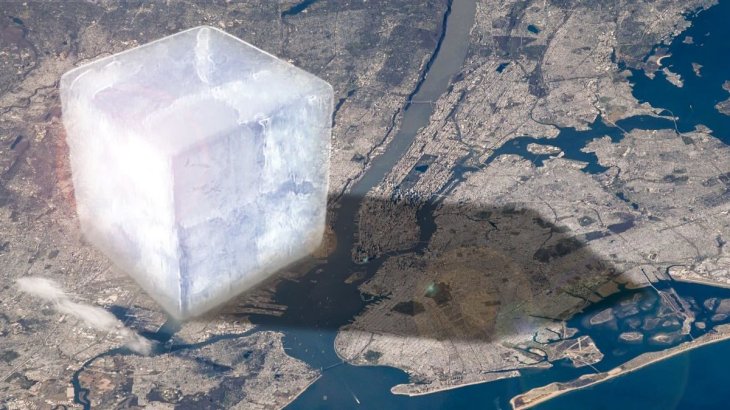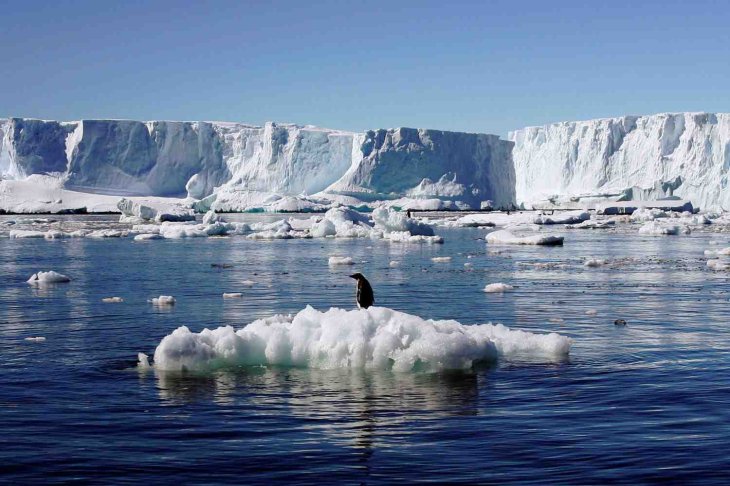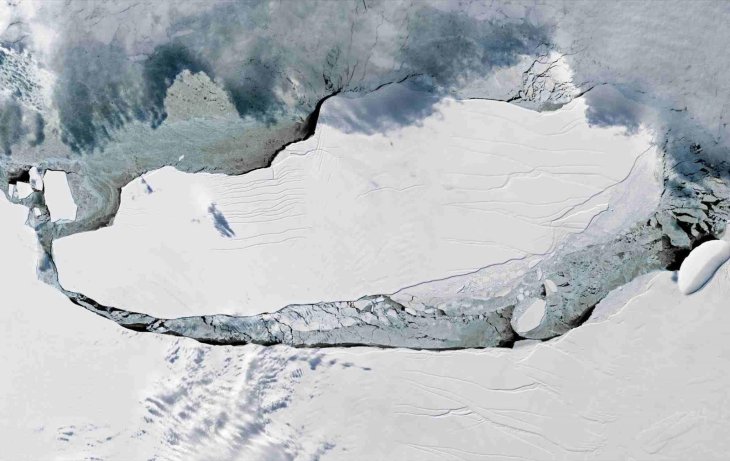This 10Km Tall Ice Cube all Shows How Much Ice We Lose Every Year
Dhir Acharya - Jan 28, 2021

Since 1994, we have been losing 1.2 trillion tons of ice per year. But for those without a good grasp of numbers, a visual approach will be more effective.
- Japan Hydrogen Breakthrough: Scientists Crack the Clean Energy Code with Mind-Blowing 1,000% Efficiency Jump
- 'Five-second rule' For Food Dropped On The Floor: Is It True?
- Scientists Want To Send 6.7 Million Samples, Including Sperm, To The Moon
Over the past years, we have talked a lot about the loss of ice on our Earth, especially in Antarctica. It’s common knowledge that we are losing more and more ice year over year. But now, a study has put this matter in a striking perspective.
Since 1994, we have been losing an annual amount of ice of 1.2 trillion tons. But for those who do not have a good grasp of numbers, a visual approach will be more effective. The ice cube in the following picture is 10 kilometers high, which is equivalent to 37 THE 42 buildings in Bengal on top of each other.

This ice cube represents the average amount of ice we have lost for burning fossil fuels each year in the last two decades. Compared with this ice cube, skyscrapers are like toothpicks. More importantly, the ice cube is becoming bigger as we are losing more ice.
This illustration is tied to a new study released earlier this week, which looks at the state of the cryosphere. A group of scientists from the UK used climate models and satellite measurements to explore what is happening to the ice around the world. Most studies focus only on ice on land or the sea, but this new one takes both into account to help us better understand how much ice has melted because of climate change.

The lead author of the study and ice researcher Tom Slater wrote in an email:
“There has been a huge international effort to study individual regions, such as glaciers spread around the planet, the polar ice sheets in Greenland and Antarctica, the ice shelves floating around Antarctica, and sea ice drifting in the Arctic and Southern oceans. We felt that there was now enough data to be able to combine these efforts and examine all the ice being lost from the planet.”
It’s shown that Arctic sea ice has the highest disappearing speed. According to the study, 7.6 trillion tons of ice have melted between 1994 and 2017. The second fastest-melting ice is Antarctic ice shelves, 6.5 trillion tons of which have disappeared from Earth. Sometimes, ice vanishes in catastrophic fashion, such as the most recent incident called Iceberg A68. It’s a piece of ice as large as Delaware that ripped off the Larsen C ice shelves back in 2017. The piece of ice has since wandered the Atlantic and Southern oceans.

On the other hand, there are new forms of ice shelf drama going on. Apart from the ice area, the scientists also look at the ice volume. They find that the most shocking effects are beneath the surface of ice shelves. Ice shelves stick out over the ocean and hold back glaciers on ice sheets on land. However, in West Antarctica, direct and satellite observations show that warm water is eating away at the ice shelves, which could cause them to eventually collapse. In turn, this will raise the sea level by over 3 meters. Slater said:
“We found that it took only about 3% of the excess heat created by greenhouse gas emissions to melt all this ice, a surprisingly small amount of energy to melt such a large amount of ice, which has a disproportionately large effect on our environment.”
Featured Stories

Features - Jul 01, 2025
What Are The Fastest Passenger Vehicles Ever Created?

Features - Jun 25, 2025
Japan Hydrogen Breakthrough: Scientists Crack the Clean Energy Code with...

ICT News - Jun 25, 2025
AI Intimidation Tactics: CEOs Turn Flawed Technology Into Employee Fear Machine

Review - Jun 25, 2025
Windows 11 Problems: Is Microsoft's "Best" OS Actually Getting Worse?

Features - Jun 22, 2025
Telegram Founder Pavel Durov Plans to Split $14 Billion Fortune Among 106 Children

ICT News - Jun 22, 2025
Neuralink Telepathy Chip Enables Quadriplegic Rob Greiner to Control Games with...

Features - Jun 21, 2025
This Over $100 Bottle Has Nothing But Fresh Air Inside

Features - Jun 18, 2025
Best Mobile VPN Apps for Gaming 2025: Complete Guide

Features - Jun 18, 2025
A Math Formula Tells Us How Long Everything Will Live

Features - Jun 16, 2025
Comments
Sort by Newest | Popular